Unlocking Creativity: The 24th Annual Prison Creative Art Project Show
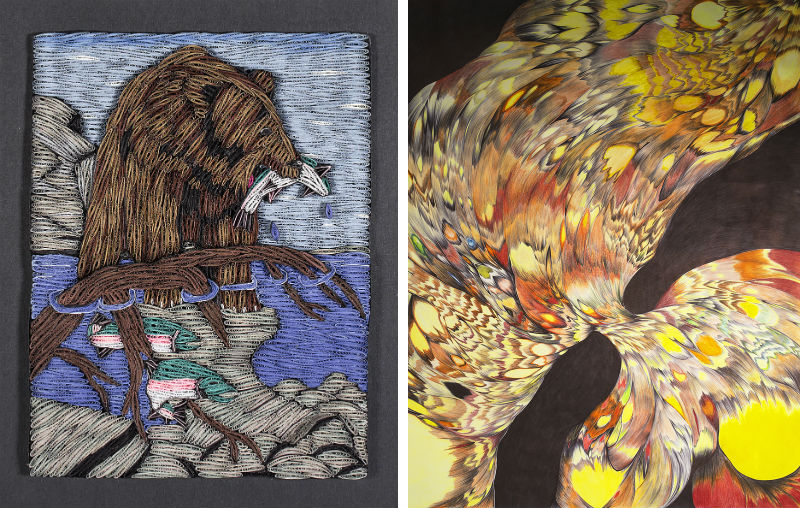
It is no secret that the American prison system is harsh, socially isolating, and unequal in its treatment of minorities and the poor. For most of us, that uncomfortable acknowledgment is followed by an awkward pause and a polite change of subject.
But visual artist and activist Janie Paul decided 24 years ago that she wasn't having it. Along with her husband, fellow activist and writer Buzz Alexander, she helped found the Prison Creative Arts Program, an ongoing project that connects men and women incarcerated in the Michigan prison system to the outside world through art. The 24th Annual PCAP Art Show, with original artworks by prison artists, opened March 20 at University of Michigan's Duderstadt Center Gallery.
Generation Next: "Inner Fragments: Contemporary Art by Iranian Women Artists"

Art exhibits get organized for lots of reasons. In the case of Inner Fragments, a traveling exhibit of 16 young Iranian women artists that landed recently (and briefly) in the University of Michigan’s Duderstadt Gallery, the organizers aim to correct what they see as some misperceptions in the West about contemporary art and artists in Iran.
Their work, varied in style and tone and featuring media from painting to sculpture to video, suggests that Iranian women artists share more with their Western sisters than the sum of their differences might suggest.
Representation, Now: “Art Now 2019: Painting” at Ann Arbor Art Center
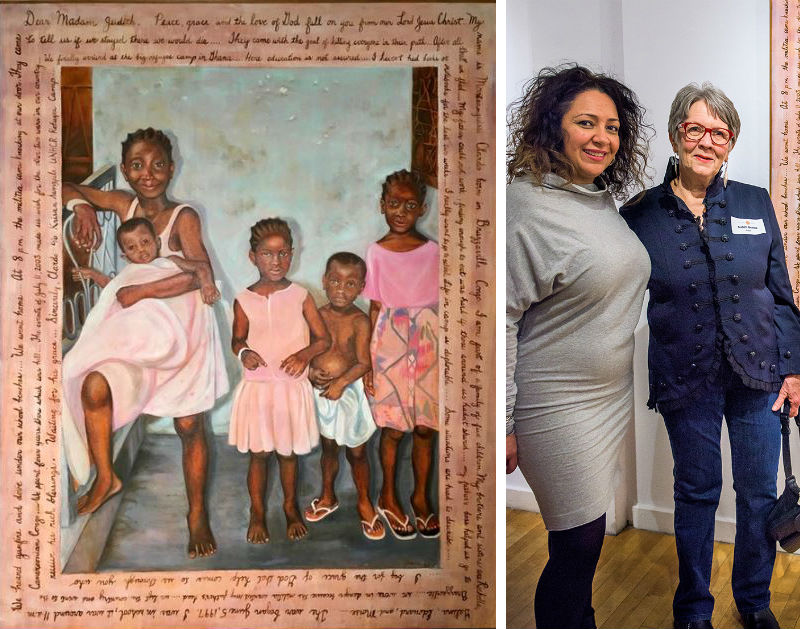
Continuing with the fifth installation of its semi-annual exhibition themes, the Ann Arbor Art Center’s Art Now 2019: Painting illustrates the vitality of this perennial art form in our contemporary arts.
Given the dramatic permutations that some art mediums have experienced in the last century -- fabrics and ceramics come readily to mind -- the transitions that painting underwent are seemingly under the radar. But this statement, of course, is not the case.
After all, it was only a little more than one brief century ago that the fury of expressionism was beginning to be felt in European art. Ultimately, various abstractions were going to rule the cutting-edge roost for all intent and purposes through mid-century to be supplanted by the playful shock of Neo-Dada in the 1950s and then branch into the various -isms that would amaze audiences through the balance of the 20th century.
Representation -- expressive or otherwise -- was always a predominant force in painting that worked itself around these flashier kinds of headliner aesthetics. And as the Art Center’s Art Now 2019: Painting heartily shows us, representations -- expressive or otherwise; particularly portraiture -- are still front and center in the visual arts same as it ever was.
Joe Bauer's "Robots vs. Aliens" is a multimedia art project, concept album, and mailed mystery tale
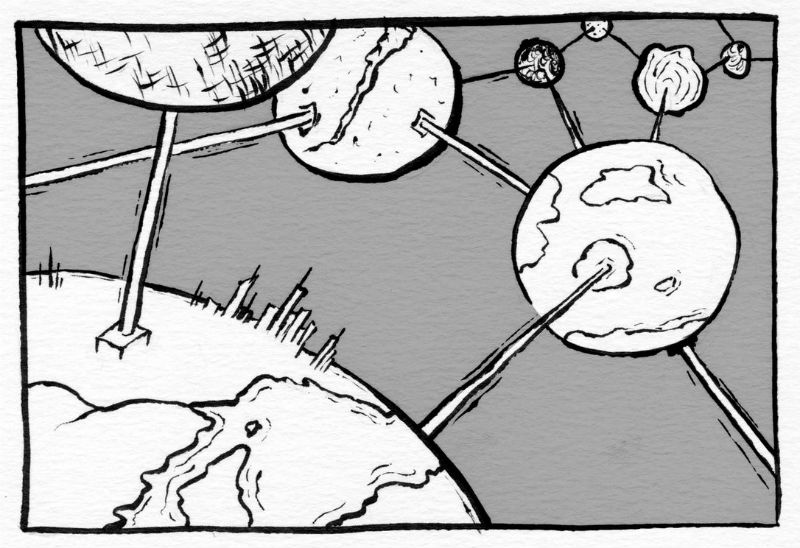
It may sound like a movie title ripe for a Mystery Science Theater 3000 show, but Robots vs. Aliens is the name of a new multimedia art project by Joe Bauer, an Ann Arbor-based musician and co-founder of the North Coast Modular Collective.
Produced under Bauer's stage name, Verzerren, Robots vs. Aliens is comprised of a concept album featuring modular synthesizers, illustrations, mailed letters and postcards, and performances at Riverside Arts Center in conjunction with the new exhibition Towards/Past the Future, which explores "technology, society, and identity through the lens of science fiction."
Set 100 years into the future, Robots vs. Aliens tells the story of humans and cyborgs living together, but their equilibrium is disrupted when peaceful dispatches from extraterrestrials are misinterpreted. The robots revolt, aliens invade, at the Earth is devastated. But the remaining humans have a chance at redemption when intercepted messages are sent back in time in hopes that people will read them and make different choices to induce an alternative future. This is where the postcards and letters by Bauer and artist Aaron Graff come into play: participants will receive these documents in the mail over a two-week period with the object of piecing together the story and solving the mystery of how humanity can save itself.
I asked Bauer some questions over email about the inspirations and ideas behind Robots vs. Aliens, which you can also listen to below.
Influence & Appropriation: Carrie Mae Weems at the Michigan Theater

“Sometimes we remodel because we’ve been left out.” --Carrie Mae Weems
I guess I would call myself superstitious. At least that’s how I think about it in those moments when I feel like the universe is pushing me in one direction or another.
I went to see Carrie Mae Weems speak on February 14 as a part of the Penny W. Stamps Distinguished Speaker Series. This was my second time in the Michigan Theater in the space of one week and for someone who sees herself as a person of somewhat nerdily pedestrian interests, I find myself off-kilter when I frequent what I think of as a higher-brow spot. I’m more Netflix than Michigan Theater.
Weems, though, is a name that I have come to know through encountering her work here and there -- and then having an I-have-to-know-more-about-this-artist moment, finding again, I am looking at Weems’ work.
Recombinant Tales: Ruth Crowe’s “Storytelling with Photo Infusion and Encaustic” at Gifts of Art
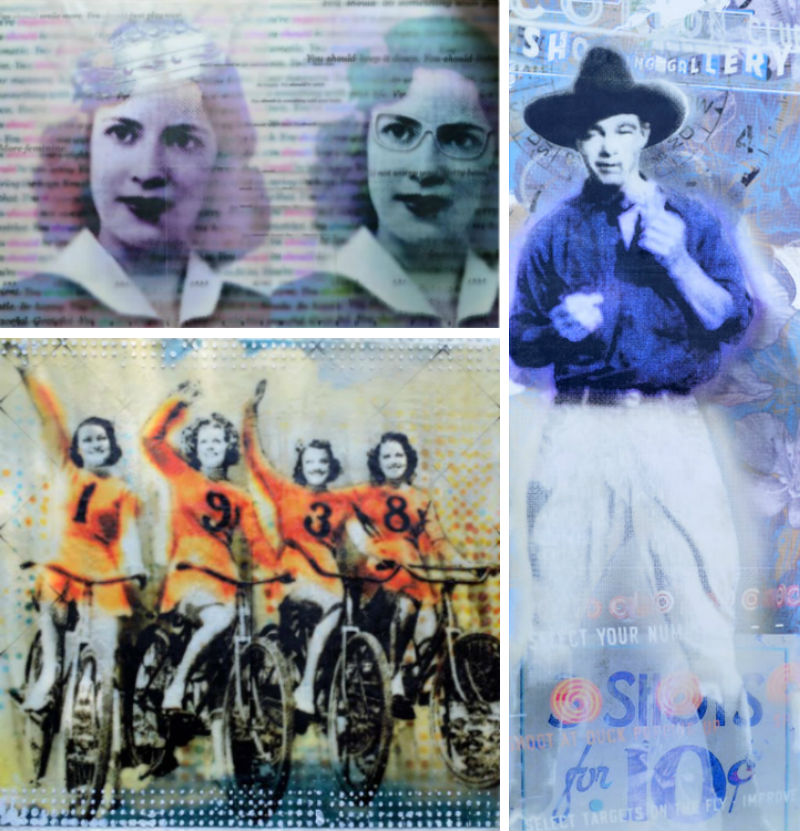
Taken separately, photo fusion and encaustic are interestingly differing forms of art. Taken together, they reflect local artist Ruth Crowe’s wry multimedia Storytelling with Photo Fusion and Encaustic exhibit at the Gifts of Art Gallery in the University of Michigan Hospital main corridor.
Crowe definitely has views she wants to communicate in her art, yet she’s not a polemicist. Rather, she allows for her work to speak for itself. It’s a brave strategy -- and it’s this subliminal perspective that speaks volumes of her views.
With Full CareForce: Marisa Morán Jahn's "The Mighty and the Mythic" at Stamps Gallery explores interactive, social-activist art
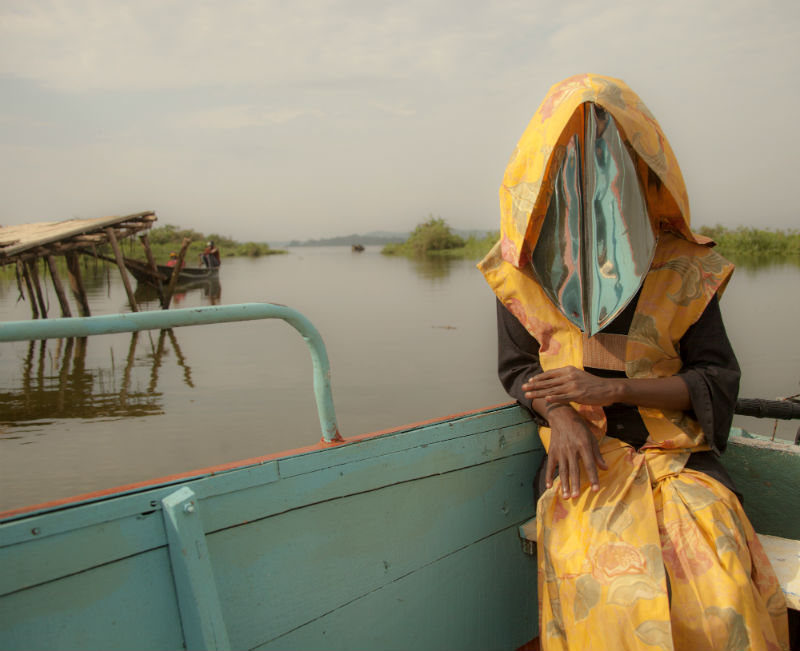
The Stamps Gallery's The Mighty and the Mythic is an interactive exhibit featuring the multi-faceted work of social activist and artist Marisa Morán Jahn. Curated by Srimoyee Mitra, this exhibition is an expansive collection with examples from three of Jahn’s ongoing projects. If you visit, make sure to give yourself plenty of time to view the many videos playing on TV screens around the gallery.
The three projects on display are CareForce (2012 to present), Biblobandido (2010 to present), and MIRROR | MASK (2017 to present). Though these are the artist’s solo projects, Jahn relies on the participation of her collaborators, who are often immigrants, domestic workers, and youths. Stamps Gallery notes that the work is infused with play and humor in order to portray her subjects’ lives with dignity, the ability to critique power, and to “build momentum within their communit[ies].” Jahn bases her practice on her own experiences as the child of first-generation Chinese and Ecuadorian immigrants.
It's a Family Affair: A mother-and-son creative partnership on exhibit at NCRC
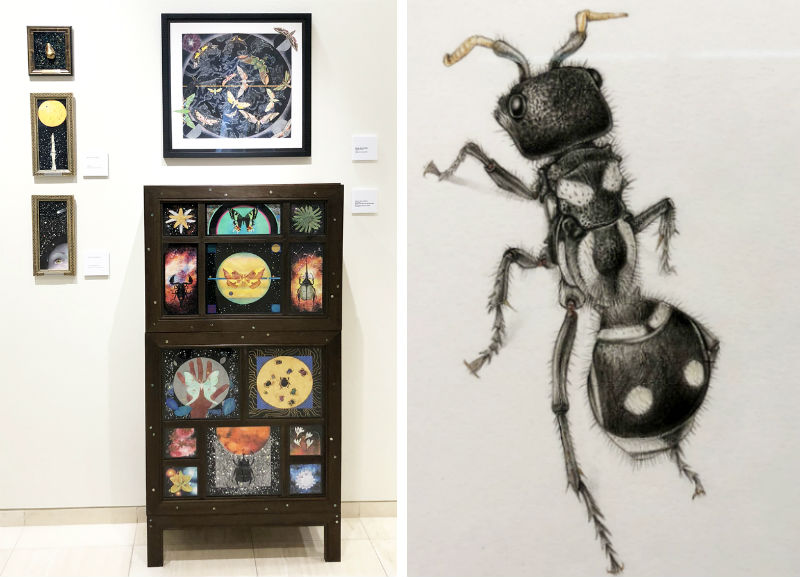
The spirit of the Renaissance's Cabinets of Curiosity is alive and well and on display in the University of Michigan’s NCRC galleries through May, courtesy of a mother-and-son artist duo. Two separate exhibits, Ecological Fiction by Karen Anne Klein and Hidden Ubiquity: Celebrating the Tiny Majority by Barrett Klein, delineate and illustrate nature’s inhabitants and habitats, from the cosmic to the minute.
David Opdyke's "Paved With Good Intentions" uses nostalgic imagery to critique modern politics

The Institute for Humanities at the University of Michigan launched its Year of Humanities and Environments with the exhibition Paved With Good Intentions by David Opdyke. The show consists of a full wall-sized installation of altered vintage postcards, two animated short videos, and two video channels rotating quotes by politicians. The three media serve to address similar subject matter: the current political climate in America. Climate is an operative word, as Opdyke’s work focuses in on the environment and climate change. His pieces criticize not only American culture but also inaction and stagnancy due to an unwillingness to find common ground. Using iconic, even nostalgic imagery on old postcards as a backdrop, our ideal of “America the Great” is challenged in numerous ways with Opdyke’s artistic interventions.
The gallery wall text, written by Institute for Humanities curator Amanda Krugliak, states, "David Opdyke’s installation Paved With Good Intentions up-ends any snapshots of family vacations, destination spots, and America the Beautiful still in our pockets.” Opdyke’s statement is printed below Krugliak’s and expands on the project. The massive work, titled This Land , was created with 528 postcards from “all across the United States" -- views of local and national parks, cities, rivers, bridges, lakes, landmarks, farms and wilderness -- assembled into a vast gridded landscape beset by environmental chaos.
The postcard collage creates an overall landscape, but upon close examination, there are many smaller dramas (or in this case, disasters) at play. As the grid reaches the bottom of the wall, postcards are falling in disarray, some having landed on the floor. Those that are on the floor reveal handwritten notes by their original owners, creating an eerie connection to people of the past, even as Opdyke’s overall project suggests a future plagued by increased disaster and chaos.
Elizabeth Youngblood's "The Smell of Lint and Frost" evokes Midwestern winters

I was left in the cold the first time I viewed Elizabeth Youngblood's exhibition The Smell of Lint and Frost.
(I'll give you a second to recover from that high-end wordplay.)
And it's not just because I trudged across the University of Michigan's campus through piles of snow in sub-20-degree weather to view the Detroit-based U-M grad's mixed-media sculptures and drawings at the East Quadrangle's RC Art Gallery.
(I'm really going in on the cold/frost thing here. Take a deep breath.)
Like having no ice cubes in the freezer, it felt like something was missing in this small gallery's exhibition.
(Sorry, like you, I've been cooped up for days. I'm *this close* to reenacting Jack's death scene in The Shining. But I'll let it go, let it go, turn away and slam the door on all these chilly puns. The cold never bothered me anyway. .)
I'm not sure if it was the lack of an artist statement to contextualize the works or that there were no title cards giving some sense of the materials used and whether the pieces had names, but something about The Smell of Lint and Frost wasn't landing in my frozen brain.
Youngblood's work is minimalist and austere, and in this exhibition, the pieces range from monochromatic gestural paintings and fine-line drawings of spirals with accompanying complementary sculptures that appear to consist of wire and plaster.
It wasn't until I left the gallery and read a bit more about Youngblood's working methods and then went to see the exhibition again that The Smell of Lint and Frost made some sense to me.


































